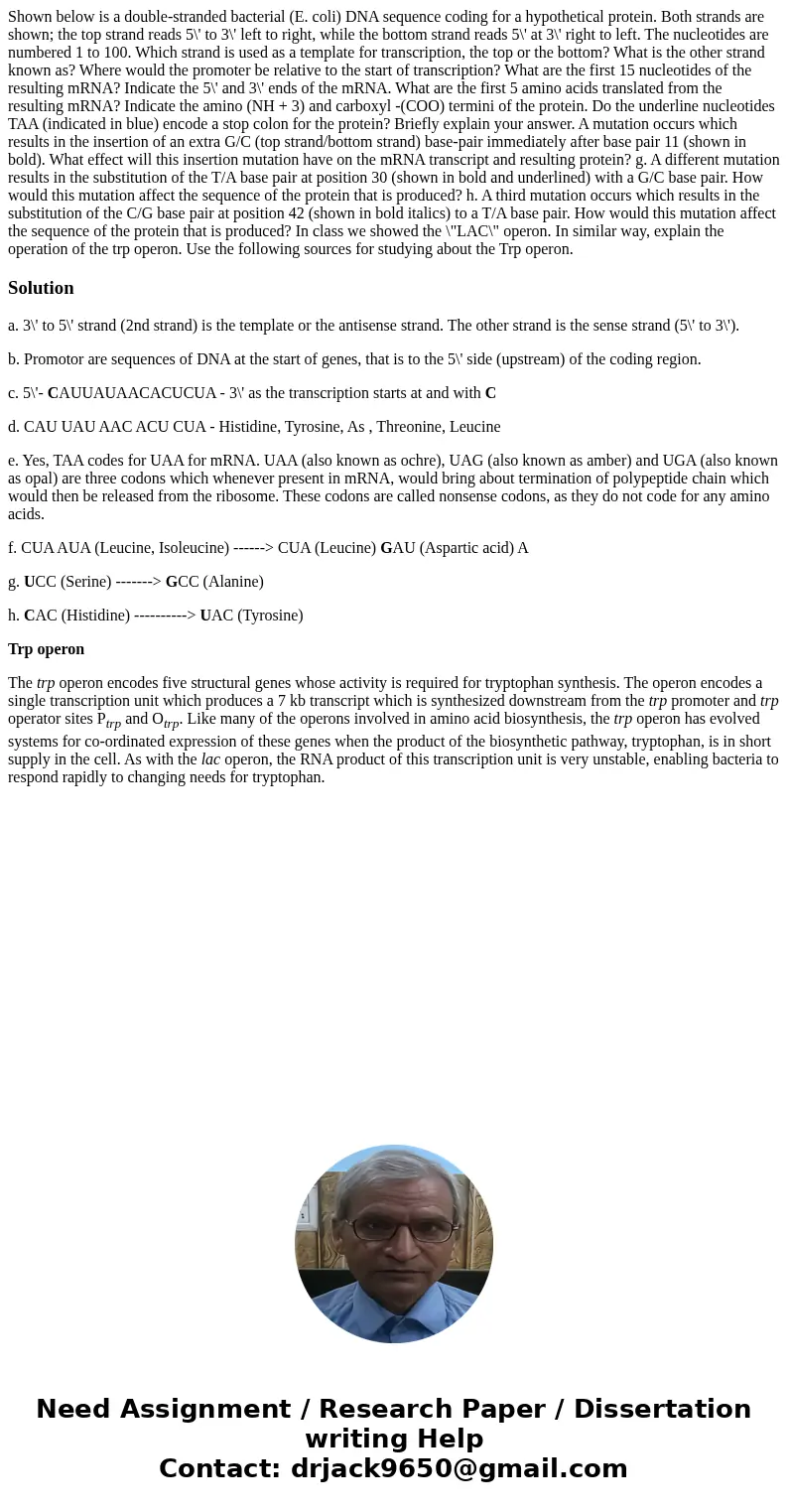Shown below is a doublestranded bacterial E coli DNA sequenc
Solution
a. 3\' to 5\' strand (2nd strand) is the template or the antisense strand. The other strand is the sense strand (5\' to 3\').
b. Promotor are sequences of DNA at the start of genes, that is to the 5\' side (upstream) of the coding region.
c. 5\'- CAUUAUAACACUCUA - 3\' as the transcription starts at and with C
d. CAU UAU AAC ACU CUA - Histidine, Tyrosine, As , Threonine, Leucine
e. Yes, TAA codes for UAA for mRNA. UAA (also known as ochre), UAG (also known as amber) and UGA (also known as opal) are three codons which whenever present in mRNA, would bring about termination of polypeptide chain which would then be released from the ribosome. These codons are called nonsense codons, as they do not code for any amino acids.
f. CUA AUA (Leucine, Isoleucine) ------> CUA (Leucine) GAU (Aspartic acid) A
g. UCC (Serine) -------> GCC (Alanine)
h. CAC (Histidine) ----------> UAC (Tyrosine)
Trp operon
The trp operon encodes five structural genes whose activity is required for tryptophan synthesis. The operon encodes a single transcription unit which produces a 7 kb transcript which is synthesized downstream from the trp promoter and trp operator sites Ptrp and Otrp. Like many of the operons involved in amino acid biosynthesis, the trp operon has evolved systems for co-ordinated expression of these genes when the product of the biosynthetic pathway, tryptophan, is in short supply in the cell. As with the lac operon, the RNA product of this transcription unit is very unstable, enabling bacteria to respond rapidly to changing needs for tryptophan.

 Homework Sourse
Homework Sourse